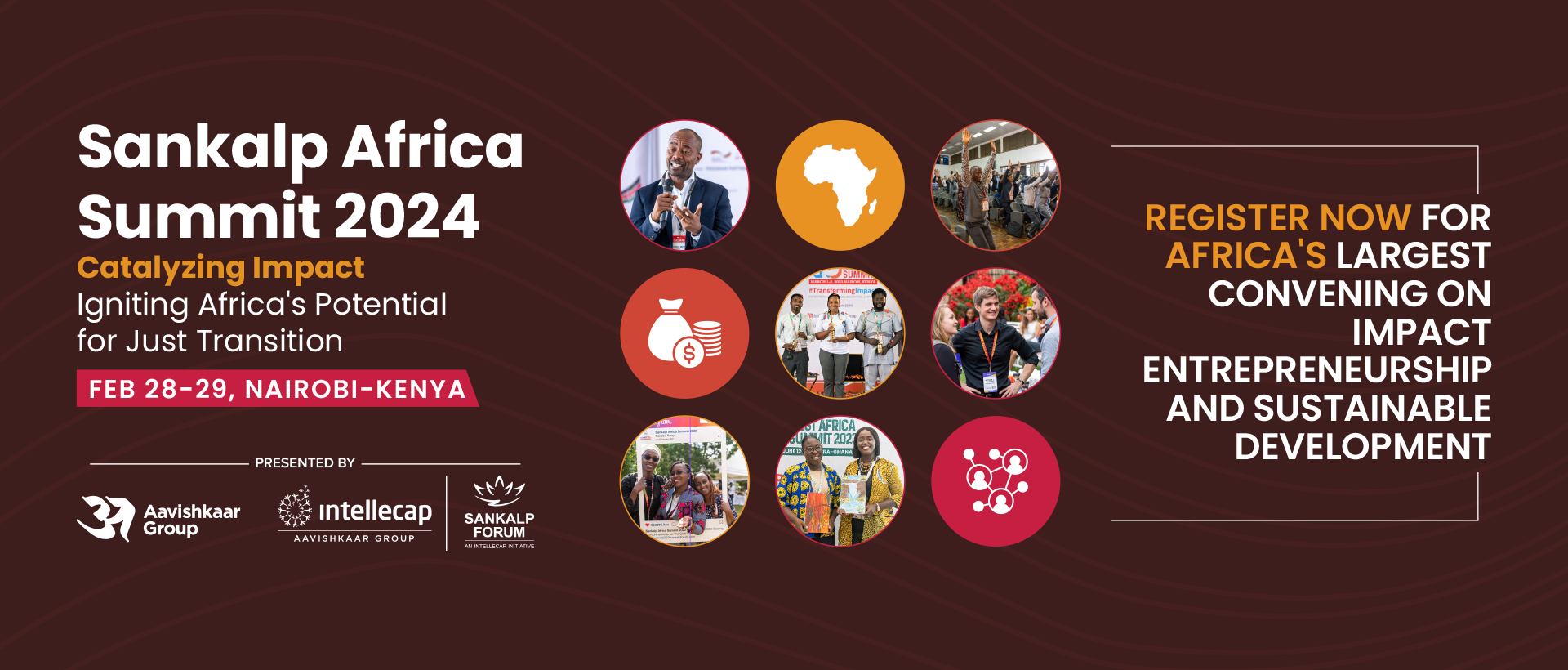-
IMPACTENTREPRENEUR
| October, 13, 2022Watch the Videos of Aavishkaar Group Leadership at Impact Investor’s Council “Prabhav 2022”
Read More -
impactentrepreneur
| September, 30, 2022Announcing the Winners of the 14th Edition of the Sankalp Global Awards 2022
Read More -
Hindu Business Line
| September, 20, 2022The 14th Sankalp Global Summit 2022 will rally Global leaders to create transformational impact
Read More -
Good Food Innovation Fund
| September, 07, 2022Good Food Innovation Fund Awards its 1st Cohort of Enterprises with over USD 1 Million to Support Nutritious and Affordable Food Across Sub Saharan Africa
Read More -
Mongabay
| August, 11, 2022Rethinking, recycling and re-loving: A peek into India’s circular fashion economy- Mongabay India features Circular Apparel Innovation Factory
Read More -
Krishi Jagran
| August, 09, 2022TRIF Launches a Carbon Finance Platform for 1 Million Smallholder Farmers
Read More -
The Economic Times
| August, 09, 2022Intellecap, Transform Rural India Foundation launch carbon finance platform for 1 million smallholder farmers
Read More -
livemint
| August, 01, 2022PM plans carbon market trading site on 15 Aug – Mint in conversation with Santosh Kumar Singh, MD, Intellecap
Read More -
Entrepreneur.com
| July, 25, 2022Transforming Innovation and Entrepreneurial Ecosystem for Achieving our SDGs- Entrepreneurs Startups Magazine features article by Santosh Singh, MD, Intellecap
Read More - Kenya: Fibered Fresh Partners, Keep it Cool, Sanku Kenya Ltd, Shalem Investments, and Smart Logistics Solutions
- Rwanda: Agri Farmer Centre Ltd (Agriface) and Muteesa Company Ltd
- The global fashion industry largely follows the linear pathway of ‘take, make, wear and throw’, producing a staggering 13 million tonnes of global textile waste.
- Textile industry stakeholders are now finding inventive solutions to make the circular fashion economy resilient, restorative and regenerative in nature. An overhaul in the legacy business structures would require an incremental approach that is both planet and people-positive.
- In India, the movement for circular fashion focuses on designing circular textile waste models, unlocking green jobs, setting up technology-backed systems that enables brands to run their thrift shops and solving the price conundrum of slow fashion.
- Generating awareness of different types of carbon projects (e.g., agroforestry, clean cooking, waste management, etc.) and their benefits
- Enhancing technical capacity to design and implement high-quality carbon projects at scale
- Supporting monetizing of carbon assets and pre-financing of projects
- Establishing rules on fair practices for carbon benefit sharing
- Improving resilience of vulnerable communities to climate change through improved watershed, cooler microclimate, soil erosion prevention, and enhanced biodiversity
- Generating awareness on different types of carbon projects (e.g., agroforestry, clean cooking, waste management etc.) and their benefits
- Enhancing technical capacity to design and implement high-quality carbon projects at scale
- Supporting monetizing of carbon assets and pre-financing of projects
- Establishing rules on fair practices for carbon benefit sharing
- Improving resilience of vulnerable communities to climate change through improved watershed, cooler microclimate, soil erosion prevention, and enhanced biodiversity

Watch the Videos of Aavishkaar Group Leadership at Impact Investor’s Council “Prabhav 2022”
Impact Investors Council hosted the fourth edition of Prabhav on the 12th and 13th of September in New Delhi. More than 650+ delegates and 140+ speakers across 15 countries graced Prabhav, including over 30 global impact investors. For more on Prabhav – click here
Aavishkaar Group, a founding member of Impact Investors Council, was well represented by Sushma Kaushik, Partner, Aavishkaar Capital & Sowmya Suryanarayanan, Director- Impact and ESG, Aavishkaar Capital who spoke at the Summit while Amar Gokhale, Associate Director- Gender & Livelihoods, Intellecap, and Sanchayan Chakravorty, Partner, Aavishkaar Capital moderated key sessions at the Summit.

Equity For Impact | Sector Insights: Financial Inclusion
Financial Inclusion has been the traditional mainstay of India’s impact investing ecosystem, attracting almost half the entire equity capital flowing into Indian impact enterprises since 2017. This panel explored how India’s financial inclusion landscape has evolved over the years and highlighted the tech-driven innovative business models propelling this sector into the future.
Speakers: Ajaita Shah, Founder And CEO, Frontier Markets – Anirudh Sarda, Head of Equity Investments (Asia), Oikocredit – Jyotsna Krishnan, Managing Partner, Elevar Equity – Sanjay Jain, Chief Innovation Officer, CIIE.CO – Shashaank Awasthi, India Advisor, Gray Ghost Ventures, Sushma Kaushik, Partner, Aavishkaar Capital
To watch the Video – Click Here

Impact Measurement and Management: Practitioner’s Perspective
Impact measurement and management helps create systemic, sustainable change and also drives value creation for all stakeholders. A robust impact measurement and management framework enables enterprises and investors to account for their social performance, value their contribution to society and generate greater credibility with stakeholders such as their customers. It is therefore critical to develop universal standards for social impact to catalyze the scaling up of the impact investing ecosystem.
Speakers: Arnab Mandal, Functional Head – Impact Measurement, Tata Trusts, Devang Bhandari, Global COO – ESG Advisory, KPMG, Reihem Roy, Partner, Omnivore Sowmya Suryanarayanan, Director – Impact and ESG, Aavishkaar Capital, Sugandhi Matta, Chief Impact Officer, ABC Impact – Varad Pande, Partner – Strategy, Impact & New Initiatives, Omidyar Network India
To watch the Video –Click Here

The Road Ahead for Climate Investing: Experiences & Learnings from LPs
This session brought together Global and Indian Climate-tech Capital Providers to draw best practices and learnings from the global climate-tech ecosystem. The discussion focused on the pathways to strengthen a few climate-tech sectors in India and accelerate deployment of low-carbon affordable technologies across industries.
Speakers: Ankit Agrawal, Private Equity Professional, Neev Fund – Biswarup Banerjee, Program Manager – Renewable Energy, IKEA Foundation – Priya Shah, General Partner, Theia Ventures, Sanchayan Chakraborty, Partner, Aavishkaar Capital and Tarun Arora, Partner, Encourage Capital.
To watch the Video – Click Here

Building a conducive ecosystem for gender lens investing: voices from the ground
This panel discussion explored the size of the investment and social impact opportunity for India using a gender-responsive strategy. The discussion unearthed key challenges for impact funds while charting out interventions (short-term as well as long-term) required to bolster gender equity in the impact investing ecosystem in India. This session was curated by Value for Women.
Speakers: Amar Gokhale, Associate Director, Gender + Livelihoods, Intellecap, Jenaan Lilani, Chief Operating Officer, Villgro Innovations Foundation – Ragini Bajaj Chaudhary, Director – Investments, Caspian Impact Investment Advisers – Ranjna Khanna, Director, Impact Investors Council, Shaila Lee, Global Vice-President, HR, Husk Power Systems.
To watch the Video –Click Here

Announcing the Winners of the 14th Edition of the Sankalp Global Awards 2022
Mumbai, September 30, 2022: Powered by Sankalp Forum, an initiative of Intellecap, the 14th Sankalp Global Summit hosted the annual Sankalp Global Awards 2022, geared to support, reward, recognize and celebrate high impact enterprises from around the world that are tackling key development challenges.
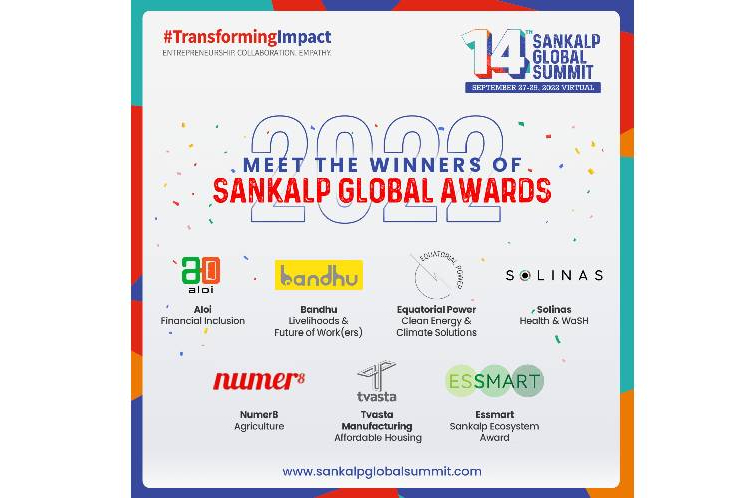
This year, impact enterprises from 43 countries applied to the coveted awards, with the winners chosen by a jury panel composed of eminent business leaders and global investors. The top 7 winners of the Sankalp Global Awards 2022 include Aloi from Nepal in the Financial Inclusion category, Bandhu from India in the Livelihoods and Future of Work(ers) category, Equatorial Power from Democratic Republic of the Congo in the Clean Energy and Climate Solutions category, Solinas from India in the Health & WaSH category, Numer8 from India in the Agriculture category, Tvasta Manufacturing from India in the Affordable Housing category and Essmart from India which won the Sankalp Ecosystem Award through a unique voting process by the impact community.
Each of the winners are solving complex social challenges through cutting-edge innovations and high potential entrepreneurship, with each demonstrating the ability to scale, disrupt and bring transformative impact in their sector.
The winner in the Financial Inclusion category, Aloi from Nepal is a micro-entrepreneur financing platform that uses blockchain to automatically monitor business expenditures
The winner in the Livelihoods and Future of Work(ers) category, Bandhu from India is a mobile platform that enables low-income workers to simultaneously line up accommodation and livelihood by providing each potential migrant with a package consisting of a job and associated rental housing.
The winner in the Clean Energy and Climate Solutions category, Equatorial Power from Democratic Republic of the Congo, is a decentralized energy infrastructure company, focused on its services of building and operating solar hybrid mini-grids to provide essential power for 20 years.
The winner in the Health & WaSH category, Solinas from India, is a deep-tech startup providing asset management solutions leveraging robotics for the pipeline and sanitation industry, solving problems of water leakages, and eliminating manual scavenging.
The winner in the Agriculture category, Numer8 from India, helps small-scale fishing community by providing hourly updated marine and weather advisory, backward and forward market linkages, and financial connections by using their app.
The winner in the Affordable Housing category, Tvasta Manufacturing from India, provides 3D Printing as a mainstream solution for affordable housing, automating construction, and improving productivity and sustainability in the industry to provide better infrastructure to millions around the world.
The winner of the Sankalp Ecosystem Award 2022, selected through a unique voting process, instituted for the impact community, Essmart from India is a curated B2B e-commerce platform for rural retail shops that specializes in products that transform rural revenue potential and improve livelihoods, enabling them to sell products that struggle to move through existing supply chains and grow their businesses.
“Sankalp Global Awards brings together impact entrepreneurs to help solve challenges through cutting-edge innovation and high potential entrepreneurship. Sankalp Awards, today, in its 14th year, highlighted transformative ideas that will define the next decade, thereby demonstrating our ability to drive action and influence outcomes,” said Urvashi Devidayal, Sankalp Lead, India.
Some of the key renowned speakers at the Summit included Global leaders and practitioners such as Wendy Werner, Country Head, International Finance Corporation (IFC), Ambassador Gurjit Singh and Smt. Lakshmi Puri, Former Ambassadors of India, Ugo Astuto, Ambassador of the European Union to India, Delegation of the European Union, Ms. Ina Hagniningtyas Krishnamurthy, Ambassador Extraordinary and Plenipotentiary of the Republic of Indonesia to India, Freddy Svane, Ambassador Of Denmark, Sandeep Chakravorty, Joint Secretary, Ministry of External Affairs, Dr. Indu Bhushan, Former CEO, Ayushman Bharat, Abhishek Gopalka, MD & Partner, Boston Consulting Group, Zaved Akhtar, CEO & MD, Unilever Bangladesh, Dr. Rajat Chabba, Senior Technical Advisor, Global Healthcare Innovations at Jhpiego, Indu Bhushan, Former CEO, Ayushman Bharat (National Health Authority), Dennis Curry, Deputy Resident Representative, UNDP, Ashish Desai, Director, NITI Aayog, Payal Dayal, Senior VP, Mastercard, Sivakumar Surampudi, Group Head – Agri & IT Business, ITC, Anjalli Ravi Kumar, Chief Sustainability Officer, Zomato, Professor Dr. Rohit Jindal, MacEwan University School of Business, Monika Frech, MD, Yunus Social Business, Luis Noda, VP, Habitat for Humanity, Dr. Ajay Mathur, Director General, International Solar Alliance (ISA), Shereen Bhan, Managing Editor CNBC –TV18, Ajaita Shashidhar, Editor At Large, Fortune India, Govindraj Ethiraj, Editor, IndiaSpend, Swati Khandelwal, Executive Editor, Zee Business and Varsha Meghani, Principal Correspondent, Forbes India, among several others.
To know more, please visit – https://www.sankalpglobalsummit.com/

The 14th Sankalp Global Summit 2022 will rally Global leaders to create transformational impact
Mumbai, September 23, 2022: The 14th Sankalp Global Summit 2022 will be held virtually from 27-29 September 2022, and will bring unparalleled innovation, learning, and networking with entrepreneurs and impact leaders from across the world. The convening, hosted by Sankalp Forum, an Intellecap initiative, will be attended by over 3,000 global delegates from 100 + countries and will feature 160 Global Speakers, 40 Sessions, 200 Hours of Learning and 120 Hours of Networking across 9 High Impact tracks.

Global leaders and practitioners attending the Summit include Wendy Werner, Country Head, International Finance Corporation (IFC), Gurjit Singh and Lakshmi Puri, Former Ambassadors of India, Ugo Astuto, Ambassador of the European Union to India, Zaved Akhtar, CEO & MD, Unilever Bangladesh, Payal Dayal, Senior VP, Mastercard, Sivakumar Surampudi, Group Head – Agri & IT Business, ITC, Anjalli Ravi Kumar, Chief Sustainability Officer, Zomato, Professor Dr. Rohit Jindal, MacEwan University School of Business, Monika Frech, MD, Yunus Social Business and Luis Noda, VP, Habitat for Humanity, Shereen Bhan, Managing Editor, CNBC- Young Turks, Ajita Sashidhar, Editor At Large, Fortune India, Swati Khandelwal, Executive Editor, Zee Business and Luis Noda, VP, Habitat for Humanity, among several others.

The theme for this year’s Sankalp Global Summit is #TransformingImpact and is a clarion call for the impact community to embrace “entrepreneurship, collaboration and empathy” to navigate a changing world dynamic, with a view to deliver on the UN Sustainable Development Goals (SDGs) by 2030.
The summit will showcase 10 outstanding Global Startup Finalists through the Sankalp Global Awards 2022. As the Oscars of the Development Sector, the Awards are an opportunity for promising entrepreneurs to showcase their innovative solutions that can help transform vulnerable communities.
CEO of Intellecap, Vikas Bali, said, “The world has changed beyond our imagination. We are faced with a looming climate crisis having recorded the hottest summer in history, while the pandemic and an ongoing war have disrupted economic growth, wiping out years of developmental progress, and pushing millions into poverty. Our focus has to shift towards creating a collective response that will embrace fundamental shifts in our thinking and bring to bear, interconnectedness, empathy and transformational change, and galvanize plans to action. At Sankalp discover compelling insights to broaden the scale and build a sustainable, equitable society through ideas and investments that drive impact.“
Some of the Key Partners for the Summit this year include UNDP, Jhpiego, Terwilliger Center for Innovation in Shelter, IDRC and Energy Catalyst. The Summit is also supported by over 40+ Friends of Sankalp, Media and Outreach Partners.
This year the Summit will host Intellecap’s Rendezvous, the Private Mid-Market Companies Conference that brings together Entrepreneurs and Global Investors.
Sankalp India Lead, Urvashi Devidayal said, “The time is now to bring about transformational impact and a renewed thinking that spurs economic growth in an inclusive, sustainable manner, while helping us achieve the ambitious SDG Goals. We will leverage the Sankalp platform to enable meaningful connections between entrepreneurs, capital providers and the larger developmental ecosystem. Join us at Sankalp to reshape the future.”
The Summit will also host conversations centered around ‘High Impact tracks’ that focus on the different areas of work of the impact investment community. These include Inclusive Fintech & Financial Services, Healthcare, Water & Sanitation, Gender Lens Investing & Women Leadership, Agriculture, Climate Change & Clean Energy, Impact Investing, Blended Finance, Collaborative Philanthropy and Affordable Housing.
Join us at the 14th Edition of the Sankalp Global Summit 2022. The time for transformational change is today and we are saving you a seat. For more info and to register for the event, please visit – https://www.sankalpglobalsummit.com/

Using Climate Tech for Achieving Net Zero & Resilience
Mumbai, 14th Sept: The Impact Investing Handbook 2022 is a multidimensional view on enabling social impact. This 144 page handbook provides a comprehensive guidance on the landscape of Impact Investing in India and positions impact investing as a multi-faceted approach to catalyzing different scales of social impact in India and brings in analytical insights on key market trends and investment opportunities through seven focus areas: Equity Impact Investing, Debt Impact Investing, Gender-Lens Investing, Climate-tech Investing, Blended Finance, Sourcing of Capital for Impact and Policy & Regulations.

The Handbook, a pioneering initiative by Impact Investors Council (IIC) in collaboration with The British Asian Trust was launched at ‘Prabhav 2022’ in New Delhi. Aavishkaar Capital
The article, Using Climate Tech for Achieving Net Zero & Resilience has been exclusively written for the handbook by Sanchayan Chakraborty, Partner, Aavishkaar Capital and Santosh Singh, MD, Intellecap, under Climate-tech investing and as part of the ‘Voices of Industry’ section of the handbook.
Climate change is already resulting in, and is projected to increasingly cause, huge disruptions on economic activities, ecological systems and societal wellbeing. To mitigate the worst climate impacts, greenhouse gas emissions must be halved by 2030 and reach ‘Net-zero’ by 2050 from current levels according to the Intergovernmental Panel on Climate Change. This recognition has led to increased focus by both countries and corporations, on mitigation of climate risks and adaptation towards climate change. Globally, 77 parties representing 84 countries have pledged a net zero target covering 73% of global GHG emissions as per Climate Watch’s Net-Zero Tracker. In addition, 5000+ businesses have announced their own net-zero commitments under the UN’s Race to Zero campaign. Fulfillment of these climate commitments, encompassing both reduction of emissions and improving resilience to climate change, will require wide-ranging investments in climate technology development, building of green and climate smart infrastructure and transformation of business processes.
The imperative of climate change mitigation has been highlighted by UNFCC for over 4 decades. Multilateral climate talks led to the Kyoto Protocol in 1997 (effective from 2005), under which 37 developed countries made commitments to reduce their emissions, developed methodologies for measurement of emissions and offsets, thereby paving the way for the first national and regional markets for carbon credits. Significant venture capital investments (more than US$ 25 bn) were also made in climate technologies between 2006 and 2011, mostly in clean energy technologies in solar and wind, which were seen to be the priorities at that time. However, limited participation in the global GHG reduction commitments (none by developing nations) and shifting strategic priorities of obligated countries led to continued lack of progress in global climate talks. Global carbon markets eventually collapsed by 2012 and economic incentives for climate tech development reduced, resulting in many of the ventures losing money.
The current global decarbonization efforts are however comprehensive, encompassing all sectors of the economy and benefit from a broader and more robust agenda. This is evidenced by the fact, (a) global climate talks are progressing well under the Paris Agreement, which now includes both developed and developing economies, (b) carbon markets are well established in many economies, and (c) increased frequency of extreme weather events has spurred stakeholder activism pushing the private sector to make voluntary commitments (in addition to regulatory requirements) towards net-zero. Climate tech start-ups deploying low-carbon technologies and promoting carbon sequestration will need to play a big role in achieving transition to net-zero emissions at scale. Climate tech investments have seen a five-fold rise between 2016 and 2021 to reach $40 billion. In the first half of 2022, climate tech start-ups had already raised ~$19 billion from 500 VC funded rounds. More than 80% of the investment flows were to US and Europe, while Asia Pacific accounted for around 10%.
India is particularly vulnerable to climate change, given that a large section of its population lives near climate thresholds, is dependent on agriculture and other nature-based resources, and has low per capita income, thereby limiting ability for adaptation. Climate policies as well as climate innovation effort so far in India have primarily focused on mitigation solutions through solar and wind energy generation and de-carbonization of industry due to the high carbon footprint of these sectors; a lot more can and needs to be done on building adaptation and climate resilience. Between 2016 and 2020, 200 Indian climate tech start-ups raised more than USD1.2 billion in venture capital. Bulk of the investments were drawn to mitigation focused solutions in sustainable mobility (59%) and energy (25%), in line with global trends. Only 12% contributed to climate smart agriculture and natural resources and 4% to circular economy and waste management. The scale of the climate crisis necessitates the need to drive sustained decarbonization of the Indian economy across all sectors, including industry, food and agriculture, natural resources and built environment besides energy and transportation where bulk of the innovation efforts are focused at this time. The climate tech investment landscape would need to evolve towards funding deep decarbonization technologies to achieve its net zero target by 2070, while also investing in resilience building to further reduce climate risks
Aavishkaar Capital’s approach to funding climate tech innovations has been geared towards climate adaptation across agriculture and industry, which can impact livelihoods of, and risks to, the low-income population, at scale. Some of our earliest investments were in energy access and efficiency technologies like Vortex, which makes solar powered ATMs for rural India, and Servals, which makes energy efficient cookstove burners. Waste management is of serious concern in India which Aavishkaar identified as a theme and invested in Saraplast, which runs a portable toilet service for construction sites and urban areas, and in Lets Recycle, which is one of the largest dry waste recycling start-ups in India, currently handling around 600 MT/day across 5 cities. Aavishkaar’s investment in Soulfull was directed at climate adaptation in agriculture by promoting millets, which are climate and livelihood friendly grains traditionally grown in India
Globally, while mobility solutions (electric transportation, green hydrogen, battery) and energy transition (non-fossil fuel energy generation, grid tech, storage tech) continue to see the largest venture activity, the climate tech investment landscape has broadened to include • Food systems (land use management, alternative proteins, regenerative agriculture, alternative fertilizers) • carbon tech (carbon sequestration, climate/earth data analytics, carbon capture, carbon accounting) • clean industry tech (circular economy, fuel alternatives, emissions capture), and • Built environment (heating/cooling, advanced materials, energy/water efficiency). Across all of these sectors, use of data analytics, AI/ML, blockchain and robotics/ drones are driving many decarbonization innovations Approx. 30% of climate tech funding globally in H1 2022 is estimated to have been in carbon tech, climate management and built environment; carbon tech specifically pulled in US$ 1.5 bn in funding (more than 3X of 2021).
We at Aavishkaar believe that a holistic view of the impact of climate change on the earth’s systems and society needs to be taken, with the goals being multifarious and not just focused on emissions reduction. Venture activity needs to focus on enhancement of climate resilience and providing transition support to the communities most likely to be affected by climate change, compensating providers of ecosystem services (of air, water, forests, grasslands), protection/augmentation of the stock of natural assets and protection of biodiversity. The carbon markets are one such example that price the emissions and allow for building of natural ecosystems and compensation to the ecosystem builders, with positive impact across climate, community and biodiversity. We are excited about the Indian entrepreneurial innovations which seek to address these challenges/markets and will continue to actively invest in climate tech innovations that have the potential to materially impact India’s and global decarbonization with resilience pathway.

Good Food Innovation Fund Awards its 1st Cohort of Enterprises with over USD 1 Million to Support Nutritious and Affordable Food Across Sub Saharan Africa
Kigali, Rwanda, 7th Sep– The Good Food Innovation Fund (GFIF) has selected seven enterprises that are revolutionizing the availability and affordability of ‘good food’ in low-income communities in Kenya and Rwanda to receive funding and technical assistance to expand their operations. GFIF received 144 applications for this initial call for applications. Selection focused on small and medium enterprises (SMEs) with a special interest in promoting nutritious, regenerative, and equitably produced and distributed food—called “good food”—through schools and other institutional feeding programs. The seven SMEs will receive funding between USD 100,000 to 200,000 each, for a total of over USD 1 million.
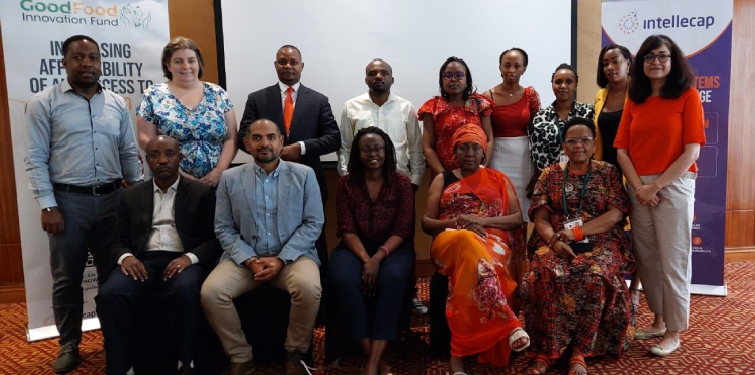
Launched in 2021 with a USD 5 million grant from The Rockefeller Foundation, the Good Food Innovation Fund supports SMEs to expand access to nutritious and affordable food across sub-Saharan Africa while mitigating barriers such as high prices, consumer preferences, and unfavorable policies. The fund is managed by Intellecap Advisory Services.
SMEs selected to receive support in this initial round of support include:
These SMEs have been selected at a time of growing food insecurity globally. In 2021, more than 282 million Africans were undernourished, and the ongoing Covid-19 pandemic, climate change, and the Russia-Ukraine conflict have fueled further food price hikes—making access to affordable food even more difficult and threatening to send millions more into hunger.
“African businesses have a vital role to play in making sure that people, especially in low-income communities, have to access nutritious and affordable food,” said Mehrdad Ehsani, Vice President at The Rockefeller Foundation. “Supporting them will improve efficiencies along the food supply chain, reduce the cost of production, increase their competitiveness, and enable them to reach to low-income populations with nutritious food.”
One of the recipients, Agriface, will work with its distributors to provide fortified wholegrain maize flour to school children through the government’s school feeding program in Rwanda. It is also promoting equitable production and distribution systems by sourcing directly from farmers while paying fair prices for their produce.
Smart Logistics Solutions, another award recipient, is a Kenyan enterprise leading in production of nutrient dense foods that are beans based. They have developed a variety of bean-based products such as noodles, and fortified porridges using beans fortified with iron and zinc. Designing such products ensure that the children and youth can enjoy foods that are attractive to them but are more nutritious and affordable. With the additional financing they will be able to reach an additional 20 schools and 25 hospitals.
“The Fund is a novel way for SMEs to improve access to affordable and nutritious foods. We are excited to work with these selected enterprises,” said Karnika Yadav, Partner & Director – Africa, Intellecap. “We are eager to help discover and transform their innovative ideas into real benefits for health and nutrition of low-income communities across Africa, while strengthening the ecosystem for good food.”
The Good Food Innovation Fund will launch its second innovation call in October 2022. This call will target innovations in vertically integrated value chains with distribution and retail, harvest and post-harvest, processing, distribution, and logistics, and will cover the additional countries of Ghana and Benin.
For more information about the GFIF, visit: Good Food Innovation Fund

Rethinking, recycling and re-loving: A peek into India’s circular fashion economy- Mongabay India features Circular Apparel Innovation Factory
Recently Mongabay India carried a detailed story around India’s circular fashion economy with inputs from key ecosystem players who are making an impact.

The story titled, “Rethinking, recycling and re-loving: A peek into India’s circular fashion economy” features insights from Venkat Kotamaraju, Director, CAIF and highlights Circular Apparel Innovation Factory’s extensive work in the space.
In the recent years, the textile industry has been the subject of criticism for its negative environmental and societal impacts, which have only grown, owing to fast fashion and the culture of fashion influencers. The greenhouse emissions of the global textile industry are known to be greater than all international flights and shipping combined. It is considered to be one of the largest polluting industries after food and construction, and its supply chain needs an urgent makeover.
However, the industry’s transition to building a sustainable ecosystem cannot be achieved overnight. The business models have been following a linear pathway of ‘take, make, wear and throw’, for several years; producing a staggering 13 million tonnes of global textile waste that ends up in landfills or is burned.

Delhi-based fashion label Doodlage collects post-consumer waste for segregation, to help Indian shoppers responsibly discard the clothes they no longer want. Photo from Doodlage.
According to anthropological estimates, the history of clothing dates back to 100,000 – 500,000 years, with animal fur and natural materials such as grass and leaves, primarily playing the role of the modern-day fabric. The humble beginnings were followed by a series of innovations, making clothing and fashion a visible expression of social identity.
Today, the fashion industry employs over 300 million people across the value chain, on a global scale. In India, the sector provides direct employment to over 45 million and 100 million people in allied industries. The statistics indicate that an overhaul in the legacy business structures would require an incremental approach that is both planet and people-positive.
The statistics have injected a slow, but rising dose of consciousness among industry stakeholders, who are now finding inventive solutions that are building the foundations of a circular fashion economy, one that is resilient, restorative and regenerative in nature.
Building an ecosystem of green micro-entrepreneurs
Mumbai-based Circular Apparel Innovation Factory (CAIF) – an initiative by Intellecap supported by the DOEN Foundation – describes itself as an ecosystem-builder, accelerating the transition of the apparel and textile industry towards circularity. The people at CAIF primarily work at two levels: First, they create a pipeline of innovations for brands, helping them achieve their 2030 sustainability goals to reduce carbon footprint. Second, their focus is on building an ecosystem and designing circular textile waste models that aim for closing the leakage loop.
In November 2021, they partnered with sustainability innovators Enviu and IKEA Foundation, to build capacities and skills among India’s informal waste workers, in order to unlock green jobs among the marginalised communities.
 CAIF has been actively working with over 20 Indian and global brands through different pilot projects and initiatives creating ‘green micro-entrepreneurs’. Photo from CAIF.
CAIF has been actively working with over 20 Indian and global brands through different pilot projects and initiatives creating ‘green micro-entrepreneurs’. Photo from CAIF.
“In the absence of an organised system that would help us identify and trace where these waste collectors take the waste from factories and households, we asked ourselves some basic questions – ‘How can we leverage their current understanding of the waste ecosystem?’, ‘Can we give them access to knowledge, capital, network and solutions?’” Venkat Kotamaraju, Director, CAIF and Climate Solutions, Intellecap, told Mongabay-India.
With the intention to create an organised pathway for textile waste collection, the cohort has launched area-specific pilot projects in Mumbai and Bengaluru. The focus predominantly is on training waste workers in sorting post-consumer waste and aiding them to become “green micro-entrepreneurs”, who are informed to identify the difference between repairable, reusable and worn-out clothing.
Kotamaraju said that currently, waste workers are not formally trained to identify the composition of the fabric. “They usually sell secondhand clothes and factory waste in kilos. We are imparting skills that help them identify that the value of a torn t-shirt is not the same as denim. When they understand the monetary value of the garment and direct it towards the right recyclers or cloth aggregators, we reduce the leakage of wastage into the environment.” He adds that eventually, the idea is to set up hyper-local collection and segregation centres for both manufacturers and consumers to bring circularity within reach.
For this, CAIF works closely with anchor partners – Hasiru Dala and Sahas Zero Waste in Bengaluru and Aasra Welfare in Mumbai, respectively. These partners identify waste collectors in these areas, who are then trained on various aspects of material integrity. So far, a group of 38 waste collectors have been trained. CAIF aims to increase the number to 250 workers in the first phase, creating a framework where the waste is collected in a responsible manner.
Building authenticity in the secondhand clothing market
As the former CEO of the fashion brand Okhai, Kirti Poonia is credited for scaling its business operations and building a community of artisans, especially women. However, during this process, she also identified the problem of overfilled wardrobes, largely owing to changes a woman’s body undergoes. “An average woman goes through 31 body changes in her lifetime,” said Poonia.
While it was just one part of the problem, the other was the environmental impact of fast fashion on the planet. Realising that the problems in the fashion industry were systemic and multidimensional, she felt the need to find a capitalistic solution to social or environmental problems, because that makes it easier for brands to adopt.

Relove works to build authenticity in the thrifting process and establishes direct partnership with brands. Photo from The Summer House.
Her solution to fashion pollution came in the form of Relove – a technology-backed system that enables brands to run their thrift shops. Poonia, along with her partner and co-founder Prateek Gupte launched the platform on Instagram in November 2021, with one fashion brand on board. In a span of nine months, they have partnered with 30 brands.
What makes Relove stand out, is their direct partnership with brands, which allows buyers an authentic history of the garment.
“We are building authenticity in the thrifting process that is otherwise marred by ambiguity,” Poonia said. “No one knows the origin, source or owner of the garments that are being sold in the name of secondhand fashion.”
Reselling a garment enhances its lifespan. According to Gupte, every time a garment is resold, it saves “six times its weight in CO2”. “You are eliminating the entire cycle of producing a product that is resource-intensive,” he says.
Underlining the change in perception, especially among Gen Z, Gupte shares that they receive orders from across the country, reflecting a growing acceptance of secondhand clothing culture in the country. “Our average selling time of a pre-loved garment is six days,” he added. The authenticated business model surely makes a strong business case, considering this segment is expected to reach $64 billion within five years.
The pricing conundrum in circular fashion
Not all brands have a resale policy. Neither does India have a robust system of textile waste collection. However, India has been a recycling hub for textiles for several decades and is also one of the lead importers of used clothes. While the latter has only contributed to the existing burden of clothing wastage in India, the recycling factories have been the feedstock of several sustainable brands. One of them is the Delhi-based fashion label Doodlage, which has been converting upcycled factory waste into limited edition collections since 2012. Their recent initiative involves –collecting post-consumer waste for segregation to help Indian shoppers responsibly discard the clothes they no longer want.
 Doodlage upcycles factory waste into limited edition collections. Photo from Doodlage.
Doodlage upcycles factory waste into limited edition collections. Photo from Doodlage.
While Doodlage arguably has the first-mover advantage in the sustainable fashion industry, the one question they were repeatedly asked in the initial years was of pricing: Why were their clothes made of waste so steeply-priced?
The conundrum of higher unit pricing especially for all sustainable brands limits their outreach to a larger consumer base in India, whose fashion choices are still driven by several e-commerce websites and brands that are selling fast fashion at a cheap cost. “The price tag attached to slow fashion labels is the true price of slow production, which is better for people producing products and the planet,” said Kriti Tula, co-founder and creative director of Doodlage.
Meanwhile, Kotamaraju examines the puzzle of pricing through the economics of demand and supply, highlighting that the affordable cost of fast fashion is a result of scaled operational models, off-shore manufacturing and low-cost labour, among others.
“The unit pricing is fundamentally the reason why scaling the circular economy is critical,” he said. “However, because of a complex value chain, the adoption of sustainable practices is slower. For a company whose infrastructure is designed for a cotton economy, switching to an alternative, more sustainable material would add up to the cost.”
To read this story on Mongabay India– Click Here
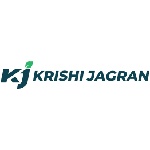
TRIF Launches a Carbon Finance Platform for 1 Million Smallholder Farmers
Globally, there is an increasing market demand for carbon credits from initiatives that deliver additional advantages including gender equality, improved health outcomes, and community economic growth.
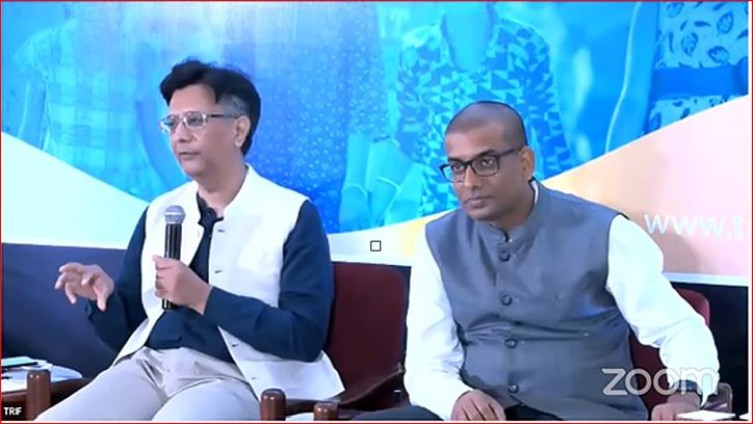
A national carbon finance platform has been launched by Intellecap and Transform Rural India Foundation (TRIF), which will help Indian smallholder farmers in utilizing climate and carbon finance for sustainable agroforestry, climate smart agriculture, and other activities that can result in carbon sequestration and mitigation.
More than a million smallholder farmers are linked together by the platform, and they will receive support and training in agroforestry and climate-smart farming.
Globally, there is an increasing market demand for carbon credits from initiatives that deliver additional advantages including gender equality, improved health outcomes, and community economic growth. However, Indian carbon producers are unable to benefit because of a lack of knowledge about climate change and carbon financing mechanisms, technical limitations that prevent the development and implementation of high-quality carbon projects, a lack of clarity regarding equitable price sharing, unclear legal arrangements, and other factors. A platform that would increase smallholder farmers’ ability to actively engage in the voluntary carbon market is required.
The newly launched platform will play a key role in empowering smallholder farmers by:
Smallholder farmers will be able to participate in and profit from the monetization of the carbon credits that will be generated under an independent carbon crediting mechanism in the voluntary carbon market through the platform, which will be registering various types of carbon offset projects. By 2050, the market for voluntary carbon emissions is expected to be worth $200 billion. The platform is already in talks with Indian and international corporations that are eager to take part and help smallholder farmers by buying carbon credits from these projects.
Speaking on the launch of this platform, Anish Kumar, Co-Lead, Transforming Rural India Foundation said, “At TRIF we are excited about launching this platform which will provide fair pricing while ensuring an increase in income of smallholder farmers and vulnerable communities as well as supporting India achieve its net zero goals sustainably. While climate finance and carbon finance are becoming a major source of financing climate action for enterprises and big corporates, smallholder farmers struggle to get access to climate finance for the projects that are not only producing climate outcomes but also creating jobs and building resilience of the local communities. This platform aims to be the guide and champion of these smallholder farmers for climate/ carbon finance.”
Santosh K. Singh, Managing Director- Agri and Climate, Intellecap said, “We are committed to increasing smallholder farmers’ income and transitioning them to climate-smart agriculture. Climate finance, specifically carbon finance provides a great opportunity for these farmers to undertake climate action projects, which would not be possible in absence of carbon finance. The platform also helps corporates and other stakeholders who are committed to net zero goals and looking to offset their residual carbon footprints from projects which not only give carbon emission reduction but also empower and benefit local communities. We are already seeing a huge demand for carbon emission reduction certificates from the voluntary carbon market. This platform will help our smallholder farmers to participate in the carbon market seamlessly.

Intellecap, Transform Rural India Foundation launch carbon finance platform for 1 million smallholder farmers
Intellecap and Transform Rural India Foundation (TRIF) on Monday announced the launch of a national platform that will help Indian smallholder farmers leverage climate/carbon finance for sustainable agro-forestry, climate smart agriculture and other activities that can result in carbon sequestration and mitigation. According to a statement, the platform brings together more than one million smallholder farmers who will be provided support and training for climate smart agriculture and agro-forestry.
Globally, there is a growing market demand for carbon credits from projects that provide co-benefits like community economic development, improved health outcomes, biodiversity enhancement, gender equality etc. However, Indian carbon producers are unable to reap the benefits due to poor awareness about climate/carbon financing mechanisms, limited technical capacity to design and implement high-quality carbon projects, lack of clarity on fair price sharing and legal arrangements, among other aspects. There is a need for a platform that would enhance the capacity of smallholder farmers to effectively participate in the voluntary carbon market.
The statement added that the newly launched platform will play a key role in empowering smallholder farmers by:
Speaking on the launch of this platform, Anish Kumar, Co-Lead, Transforming Rural India Foundation said in the statement, “At TRIF we are excited about launching this platform which will provide fair pricing while ensuring an increase in income of smallholder farmers and vulnerable communities as well as supporting India achieve its net zero goals sustainably.While climate finance and carbon finance are becoming a major source of financing climate action for enterprises and big corporates, smallholder farmers struggle to get access to climate finance for the projects that are not only producing climate outcomes but also creating jobs and building resilience of the local communities. This platform aims to be the guide and champion of these smallholder farmers for climate/ carbon finance.”
The platform will be registering different types of carbon offset projects in which smallholder farmers would be able to participate and benefit from the monetization of the carbon credits that will be generated under an independent carbon crediting mechanism in the voluntary carbon market. The global voluntary carbon market is expected to be worth $200 billion by 2050. The platform is already in discussion with Indian and global corporates who are keen to participate and support smallholder farmers by purchasing carbon credits from these projects.
Santosh K. Singh, Managing Director- Agri and Climate, Intellecap said, “We are committed to increasing smallholder farmers’ income and transitioning them to climate smart agriculture. Climate finance, specifically carbon finance provides a great opportunity for these farmers to undertake climate action projects, which would not be possible in absence of carbon finance.We are already seeing a huge demand for carbon emission reduction certificates from the voluntary carbon market. This platform will help our smallholder farmers to participate in the carbon market seamlessly.”

PM plans carbon market trading site on 15 Aug – Mint in conversation with Santosh Kumar Singh, MD, Intellecap
August 1 , 2022– Prime Minister Narendra Modi may launch a national carbon trading platform on 15 August asIndia presses ahead with its climate commitments, two people aware of the development said. The government may also come up with guidelines where carbon trading would be obligatory for some sectors.
Carbon markets are trading systems where credits are bought and sold, permitting an entity to emit a certain amount of greenhouse gases.
There are generally two types of carbon market—compliance and voluntary. The Centre’s move would make it a compliance market for some sectors, the people cited above said on the condition of anonymity.
The push for carbon markets comes when India aims to turn carbon-neutral by 2070. Several companies have announced energy transition and net-zero targets in line with the government’s plan. A formal carbon market will provide flexibility to businesses in hard-to-abate sectors to supplement their efforts with credits from the carbon market.
Queries sent to the Prime Minister’s Office, and the ministries of power and new and renewable energy remained unanswered till press time.
This comes against the backdrop of planned amendments to the Energy Conservation Act to mandate the use of clean energy, including green hydrogen, and to institute a regulatory framework for carbon trading.
After the bill provides a regulatory framework for carbon trading in India, the government will develop guidelines.
Santosh Singh, partner and managing director, climate and agri solutions at Intellecap, an advisory firm, said: “The PAT (perform, achieve and trade) scheme of the Bureau of Energy Efficiency (BEE) and the Renewable Energy Certificates (REC) mechanisms provide a good experience and basis for building the carbon market trading platform.”
Sectors such as cement, steel, thermal power plants and fertilizers may be mandated for carbon trading on the platform, Singh added.
PAT is a market-based mechanism to minimize specific energy consumption in energy-intensive industries. BEE provides specific energy consumption targets to energy-intensive industries (known as designated consumers) depending on their operational parameters.
Carbon markets have proven to be one of the most effective drivers of reducing emissions, offering the lowest-cost emission reductions. Incentives in the form of carbon credits against the deployment of clean technologies will lead to the private sector’s involvement in climate actions.
A recent Intellecap report said carbon credits would incentivize entities with low reduction costs to reduce emissions beyond their mandate.Trading in the carbon market could reduce the overall cost of emission reductions at the societal level in India, it said. A carbon market can enable India to participate effectively in an interlinked global carbon market.
It can spur innovation and finance clean projects from Indian MSMEs, which have huge scope for emission reduction. They can also provide greater liquidity to reduction certificates from India, encouraging greater reductions globally.
The Renewable Energy Certificate (REC) mechanism is a market-based instrument to promote renewable energy and facilitate compliance with renewable purchase obligations.
RECs are traded in the Indian Energy Exchange and Power Exchange India Ltd at a price within the forbearance and floor price determined by the Central Electricity Regulatory Commission.

Transforming Innovation and Entrepreneurial Ecosystem for Achieving our SDGs- Entrepreneurs Startups Magazine features article by Santosh Singh, MD, Intellecap
Mumbai, 25th July– Recently Entrepreneurs Startups Magazine featured an article by Santosh Kumar Singh, Managing Director and Head– Clean Energy, Climate Change and Agriculture on ‘Transforming Innovation and Entrepreneurial Ecosystem for Achieving our SDGS’s (Out on Print).
In the article Santosh speaks about the potential new market opportunity, Impact Unicorns and how creating an ecosystem for empowering women and investing in R&D will help us in realizing the SDG goals.

The Covid-19 pandemic is a big setback to one of the most ambitious goals humanity has ever set for itself: the Sustainable Development Goals (SDGs). According to a recent study by UNDP, even in a non-Covid scenario, the global community would be struggling to achieve the SDGs by their 2030 deadline. The long-term impact of the pandemic has moved us further away from achieving these goals. There is a need to push and accelerate our efforts to an unmatched level to achieve the SDGs by 2030. This will not be possible without bringing in disruptive and innovative technologies, adopting more inclusive business models and nurturing entrepreneurship to achieve these inter-connected and cross-cutting goals.
Achieving SDGs has the potential to create a new market opportunity of USD 12 trillion while making the world more sustainable, equitable, and prosperous. Local entrepreneurs and small enterprises will be critical in this journey, as they can harness technologies and innovations to develop solutions that address the challenges faced by communities at the ground level, since they are also most in touch with the needs of these communities.
India, with pioneering progress in building the ecosystem for innovations and entrepreneurship, is poised to become one of the leaders in achieving the SDGs. According to the Economic Survey 2021, India had 41,061 startups in 2020. Currently, India has over 75 start ups classified as unicorns, each with an estimated valuation of more than USD one billion or more. This has also led to increased investments coming into India to fuel these startups and their innovative solutions. While a majority of the unicorns are in the e-commerce and fintech space (such as Slice, Upstox, Grofers, Bharatpe etc.), we now have the experience and ecosystem required to create impact unicorns that could provide universal quality healthcare, address challenges in the provision of education, address climate-related issues and transform our agriculture sector, both in terms of economic contribution as well as making it more resilient to climate impacts.
The “impact unicorns” are going to happen sooner than later. India has almost achieved universal access to power (99.99% households having access to electricity), addressed major challenges in financial inclusion (through government programs such as Jan Dhan-Aadhaar-Mobile, in order to ensure access to finance for last-mile customers), and probably also hosts the world’s most advanced digital inclusion framework (by building IndiaStack, a unified digital platform to conduct financial transactions and provide government services at scale). Access to power, access to finance, and data and digital technologies are the ingredients that will help us scale and develop the solutions that are needed for many of the SDGs.
While these foundational blocks are being put in place, the enormity of the challenges and the complexity of the development goals also require us to put consistent emphasis on addressing some of the gaps in our current innovation and entrepreneurship ecosystem.
Ecosystem for Empowering and Enabling Women
The first and foremost priority should be to focus on empowering and enabling Indian women to leverage innovation and entrepreneurship. A recent RBI survey found that only 5.9% of Indian startups have all-women founders. Gender segregated data further shows the harsh divide, especially in rural India. Only 25% of the women in rural areas use the Internet compared to 48% of rural men. Around 64% of the population in India still relies on solid fuels for its cooking needs, and women are disproportionately exposed to dangerous air-pollution. Our entrepreneur and investor ecosystems continue to be male-dominated and biased towards men. Within the agriculture sector, women are still struggling to get their land rights, and while they account for nearly one-third of the agricultural labour force in the country, they hold only 12.8% of operational land holdings. They are also among the most impacted by the adverse effects of unsustainable agriculture practices.
We need to make the innovation and entrepreneur ecosystem more gender-just as we can never achieve the SDG goals if women continue to remain at the fringes of the entrepreneurship and innovation ecosystem.
Investing in Research and Development
There have to be concerted efforts to increase investment in R&D and labs that will help create proofs of concept and streamline funding to undertake pilots to scale and commercialise operations for startups. We are significantly behind in terms of per capita spending on R&D compared to other regional leaders. Korea leads in terms of R&D spending, at USD 1995 per capita, followed by Israel (USD 1991). Other countries’ spendings include China (USD 1127), Brazil (USD 719), and South Africa (USD 520). India’s per capita R&D spending stands at USD 464.
Dedicated Focus on Scaling up Sustainable Agriculture and Forestry
Entrepreneurship, technologies, and innovative business and financing models can provide us a great opportunity to transform the lives of small-farmers and forest-dwelling communities.
India has to alter its path in order to achieve SDG 2 (Zero Hunger) while ensuring SDG 12 (Responsible consumption and production). To reach a sustainable stage of food security, India needs to emphasise and promote sustainable farming practices and support innovative solution providers in agriculture and livestock that help reduce hunger and risks of nutrient deficiencies. Development of innovative solutions across the agriculture value chain can address multiple SDG goals.
In addition to large agricultural land coverage, India also has vast forest lands which impacts SDG 15 (life on land) and several others, as forests can act as carbon sinks and create great value for the environment. As per a 2019 assessment, India had a total forest cover of 7,12, 249 sq. km., accounting for 21.67% of its total geographic area. Our goals to increase the forest cover and improve the quality of our forests can be expedited with use of technologies and new business models (such as global carbon markets and payment for ecosystem services).
Incubators and Accelerators for Climate Tech
India is gradually emerging as the hub in the global south for incubation and acceleration but we need more deep-science climate tech incubators and accelerators. These are essential for developing a pipeline of climate tech startups focusing on achieving SDGs.There is a massive upsurge in climate tech investment globally but only a fraction of that is coming to the global south. In the first half of 2021, about 250 deals were made in climate tech ventures worth about USD 16 billion. In terms of regions, North America has the most climate tech venture funds coming in, followed by China and Europe.
Globally, India ranks ninth with the country’s climate tech start ups receiving USD 1 billion in venture capital funding between 2016 and 2021. Over this time, 120 Indian climate tech startups raised more than 200 funding rounds from 272 unique investors. Indian climate tech investment activity has been growing in terms of the amount invested as well as the number of deals – it has grown from 18 deals in 2016 (USD 102 million) to 58 deals in 2019 (58 deals; USD 506 million). This number decreased slightly in 2020 owing to the pandemic, with 48 deals (USD 236 million). Majority of the climate tech investment in India flows to the sectors of energy and sustainable mobility. The sectors gradually gaining traction in the market are climate smart agriculture, circular economy and waste management, and natural resources and environment.
Though there has been significant growth in recent years, the climate tech entrepreneurial ecosystem in India is still at a nascent stage. Investments in climate tech account for less than 10% of the funds that are flowing into impact sectors in the country. Some of the challenges impeding growth of climate tech start ups include limited early-stage and long-term financing, lack of business support services covering mentorship, strategic advisory and talent management and low customer willingness to pay a premium for green products and services.
Reports & Policies
Our Impact Map
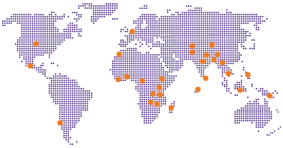
Sign up for our newsletter
© Copyright 2018 Intellecap Advisory Services Pvt. Ltd. - All Rights Reserved




